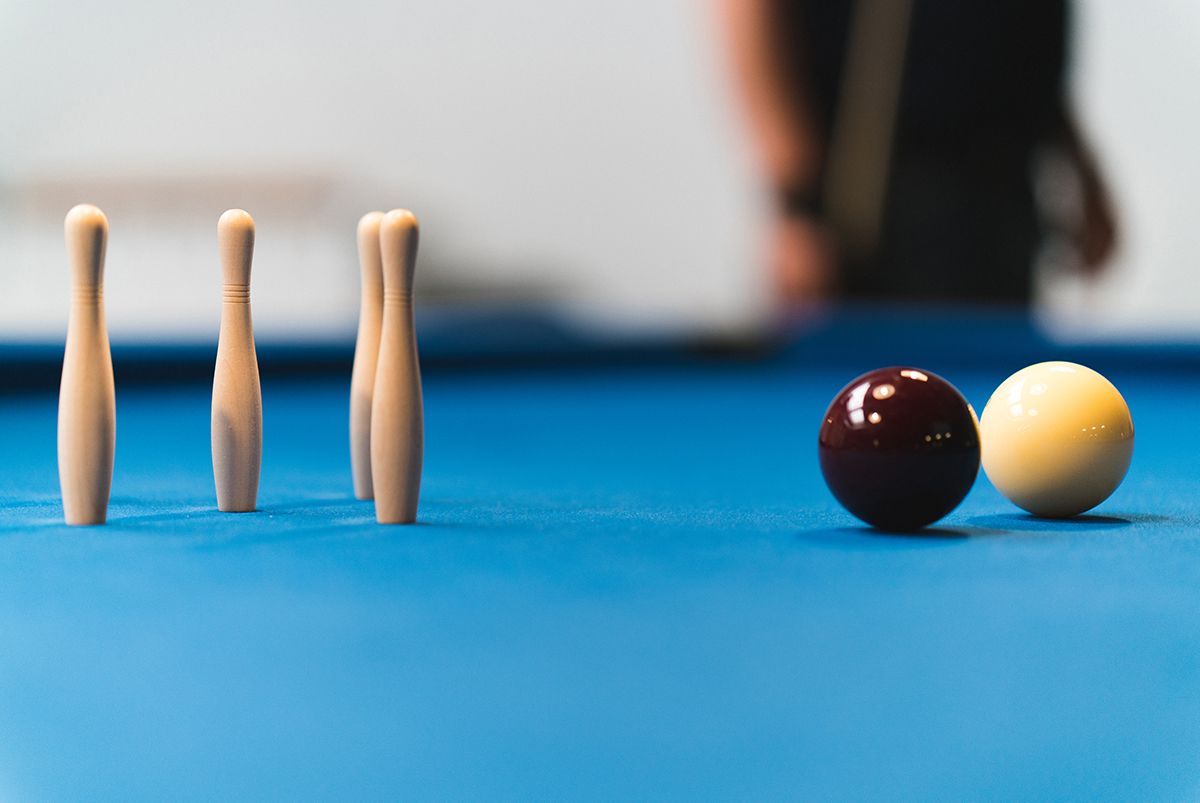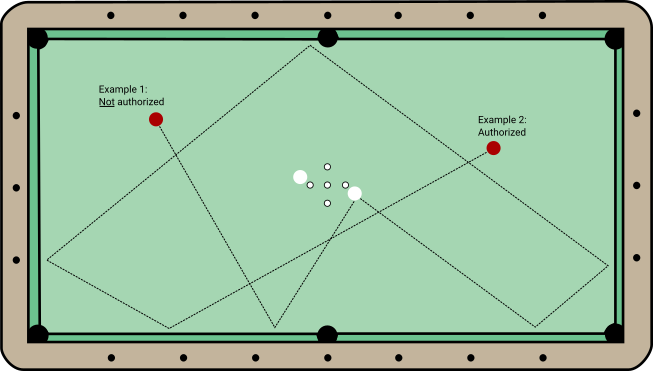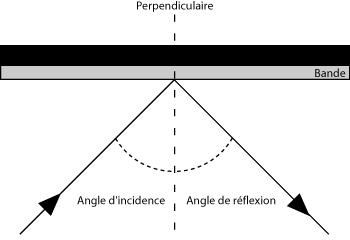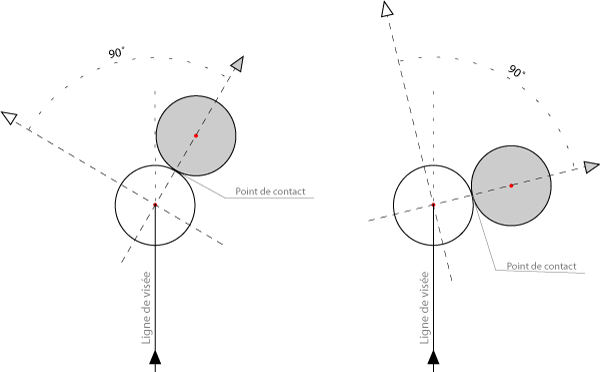Danish billiards (keglebillard) rules 🔴⚪⚪
Translation in English of the official rules from DDBU of Keglebillard, the traditional cue sport in Denmark.

Introduction
Keglebillard ([kaïlebiliarde]), sometimes called Danish five-pin billiards[1], is the traditional cue sport in Denmark. Keglebillard tables are typically found in bodegas, where it is not uncommon to play while sipping a beer in between turns: even elite players can use that combination sometimes with excess as a recent news article showed[2].
The game is regulated by an organisation called DDBU (Den Danske Billard Union), which had around 8000 members in 2020[3].
The main part of this article is a direct translation from Danish to English of the official rules from DDBU, which I decided to do because I simply couldn't find in English on the internet. The PDF dated 26-08-2021 and available on the official website[4] details the rules for the 2021-2022 season.
-- start of translation --

Definition and objective of the game
With the help of a red ball, direct one or both white balls in position to then score points. Scoring points and the right to continue the game are obtained when:
- A white ball topples pins
- The red ball hits both white balls
1. Material
In Keglebillard tournaments, billard pool, balls and rules approved by DDBU's regulations must be used.
2. Lagging and outlay
- The players decide who starts by shooting a ball towards the upper rail. The player whose ball lies closest to the lower rail chooses whether themselves or the opponent shoots first.
- Both balls need to be in movement before the ball hits the upper rail, otherwise the lag must be replayed.
- If the balls during their trajectory have touched eachother, or if they stop at the same distance from the lower rail, the lag must be replayed.
- If a player's ball hits the pins, the third ball, a long rail, goes into a hole or hits the same rail twice, then that player loses the right to choose to start.
3. Start / scoring
- At the beginning, the referee places the two white balls on the two marked spots. The red balls is placed behind the string of the player shooting first (note: the area is called "the kitchen" in standard pool game).
- The game start by the player shooting the red ball towards a white ball or a rail on the opposite half
- The game continues until an agreed distance (number of points) is reached.
- Each pin counts for 2 points
- Hitting both white balls ("carambole") counts for 4 points
- A series continues until a fault is made, or the agreed distance is reached.
4. Breaks
- A 5 minute-break must be observed the first time one of the players obtains a total score or half or more of their own distance after a series is completed.
- Breaks are not authorized in the middle of a series.
- Players must be sitting at their designated place during the whole game when they are not by the table. But short toilet breaks can be granted.
5. Faults
A fault is made and the game goes to the opposite player:
- If one or more balls are jumped off the table (see Paragraph 11).
- If the player shoots before the balls lie completely still or before the pins are put in place.
- If the player touches one of the balls with the hand, the cue or another object. The balls are placed back by the referee, at their discretion, where they lied before the fault was committed. In especially crude cases, a conscious fault can be considered as "an inappropriate behavior" and the player then designated by the referee as the loser of the game.
REMARK:
When there is ball-in-hand, when starting with a new outlay or after it's been in a hole or off the table, it is authorized to set up the cue ball with the hand or the cue, however the ball cannot be touched by cue's tip (note from the translator: duppe in Danish)
- If the player does a touche, i.e.:
A. Touches a ball with something other than the tip of the cue.
B. The cue is in contact with the cue ball at the moment it hits another ball or a rail.
C. Plays directly on a ball which touches an object ball without first releasing the balls with the help of a massé or a rail shot. - If the player doesn't touch the floor at the moment he shoots.
- If the player consciously makes visible direction marks / hold points on the rail.
- If the red ball goes in a hole.
- If the red ball topples a pin or hits a toppled pin which then topples another pin.
- If a pin (until balls and pins are still) is toppled during a shoot by the cue, a mechanical bridge, clothes or a body part.
- If a player touches a toppled pin with the cue, a mechanical bridge, clothes or a body part.
- If not a single ball touches a rail every other time pins are put up. The red alone without pins, counts as a rail.
- If three (3) reds are shot without a single pin toppling.
6. Faults / conflicts etc.
- A fault needs to be noticed before the next shot (except Paragraph 5, #2). If not, the game continues as if no fault was committed.
- The player has the right only once, to ask the referee to reconsider his decision.
- The opponent has the right to protest to the referee as long as he thinks that the player who's at the table, has committed a fault.
- Any fault committed by an outsider, referee included, cannot be held against the player. If the balls moves due to this fault, the referee shall replace them as close as possible as they were earlier.
7. The game itself
- As long as the player scores points, they have the right and duty to continue to play.
- A player always has the right, by requesting the referee, to receive confirmation whether the ball has hit the rail, or whether it is red first-time.
- If the red ball is in contact with another ball, this gives the player the right to ask for a new outlay.
- In a game, each player is entitled the same number of series.
- If the player that shot first reaches the agreed distance, the opponent in their last series start with a new outlay.
- If both players reach the agreed distance, the game is declared a tie
- A shot is performed as soon as one of the balls is touched.
- A shot is completed once all balls and pins are still.
- A shot can only be performed when all balls are still and the pins are in place.
8. Definitions
- The ball which first hits a pin is considered as the one toppling the pin; if the red ball and the white ball hits a pin simultaneously, it is the red ball which is considered to have hit it.
- A pin is considered toppled, when it lies down, or when it is standing out of the marked spot, or when it is lying against the ball, i.e. if it would topple if the ball is removed.
- If a pin cannot stand at his place because of a ball, (there should be room between balls and pins), the pin should be removed and set in place again, when the shoot, which frees the pin's spot, is completed.
9. Ball in hole
- If a white ball falls in a hole, it shall be place on the spot opposite to where the other white ball is. If the spot is taken by the red ball, the player can request a new outlay.
- If the player doesn't request a new outlay, the ball shall be placed on the spot when the shot that has released said spot is completed.
- If a white ball lies precisely on the middle line and the other white ball needs to be placed on a marked spot, that ball shall be placed on the marked spot in the half of the table opposite to where the red ball lies.
- If the red ball falls in a hole, it should be placed in the zone delimited by the lower rail and the lower string. The game continues by shooting towards the ball or the rail on the opposite side. See examples 1. and 2.
- If the red ball is "in-hand", and one of the white balls lies precisely on the billiard's middle line, it shall be considered that it has to lie on the opposite half from the other white ball. If both balls lie precisely on the billiard's middle line, they are considered to be lying each on a different side. The player chooses which ball he wishes to play.

10. Ball in hole. Interpretation.
- When a pin and a ball lie over a hole, the ball is considered to be in the hole.
- When a ball after having been still suddenly falls in the hole, it should be replaced. If that happens when a shot is performed, the shot needs to be replayed (the balls are replaced as they were before the shot).
11. Jumped-off ball
- A ball is considered as jumped-off, when it is or has been brought out of the billiard's play surface (which is covered by fabric)
- A jumped-off ball counts as a fault. The opponent starts with a new outlay.
12. Help and guidance during a game
- A player cannot receive help or advice regarding his next shot.
- The referee shall remove any lamp or other object disturbing the shot.
13. The referee
- The pin referee is the only referee (they can however consult the listefører in case of doubt).
- Each player has the right to demand, that the referee speaks loud and clearly.
- The referee declares " 20 remaining" or the first missing point count reached under 20. When a player reaches his distance, the referee declares: "Distance reached" (Distance parti or Distance udlæg).
- Any interference from outsiders shall be prosecuted by the referee.
- It is the players' duty to comply with the decisions of the referee. The denial of those can lead to a player's disqualification.
- If it is observed that the pin referee or the listefører has said something wrong, the mistake shall be corrected, and the game continues until the agreed distance is reached. If it seems unreasonable to do so, the referee can call a new game or maintain the initially announced points.
-- end of translation --
Glossary
- The lag is the first shot of the match and determines order of play. The player who wins the lag chooses who will shoot first.
- The long rails are the two wider sides, and the short rails the two narrower sides of the table.
- The strings are two imaginary lines on the table which pass perpendicular to the marked spots.
- The cue stick is the stick players use to strike a cue ball. That ball is used to then hit object balls
- A mechanical bridge (sometimes called rake, or rest in snooker, or other names like crutch, granny's stick, ladies' aid etc. as it can be mocked as being used by the least talented) is a special stick with a grooved, slotted or otherwise supportive end attachment that helps guide the cue stick – a stand-in for the bridge hand. It is usually used only when the shot cannot be comfortably reached with a hand bridge.
- A massé is a steep curve or complete reversal of cue ball direction without the necessity of any rail or object ball being struck, due to extreme spin imparted to the cue ball by a steeply elevated cue. Its invention is credited to François Mingaud.
Physics
Although it is "just physics in action", it is fascinating to see how hard it can be to actual achieve one's intentions when playing billiards. Some basics are shared here for reference.

According to the law of reflection, when hitting a rail, the angle of incidence is equal to the angle of reflection.

A natural hit without effect modifies the trajectory of the cut ball and induces a trajectory to the object ball so that their directions form a 90 degree angle[8].

Placing the cut a certain way enables to make certain effects: (1) Massé, (2) Jump, (3) Follow, (4) Center, (5) Draw (bottom of back-spin)
Wikipedia (retrieved 07-03-2023), Danish pin billiards, https://en.wikipedia.org/wiki/Danish_pin_billiards ↩︎
TV2 (05-03-2023), Sjælden karantæne uddelt: billardspillere havde drukket for meget / Rare quarantine imposed: billard players had drunk too much , https://sport.tv2.dk/2023-03-05-sjaelden-karantaene-uddelt-billardspillere-havde-drukket-for-meget ↩︎
DDBU (retrieved 07-03-2023), Medlemstal, https://dendanskebillardunion.dk/medlemstal/ ↩︎
DDBU (26-08-2021), Spilleregler for keglebillard, 2021-2022 ↩︎
World Pool-Billard Association (retrieved 07-03-2023), Rules of Play, https://wpapool.com/rules-of-play/ ↩︎
Bar Games 101 (retrieved 07-03-2023), Billiard terms, https://bargames101.com/billiard-terms/ ↩︎
Wikipedia (retrieved 07-03-2023), Glossary of cue sports terms, https://en.wikipedia.org/wiki/Glossary_of_cue_sports_terms ↩︎
Wikipedia (retrieved 07-03-2023), Billard, https://fr.wikipedia.org/wiki/Billard ↩︎
